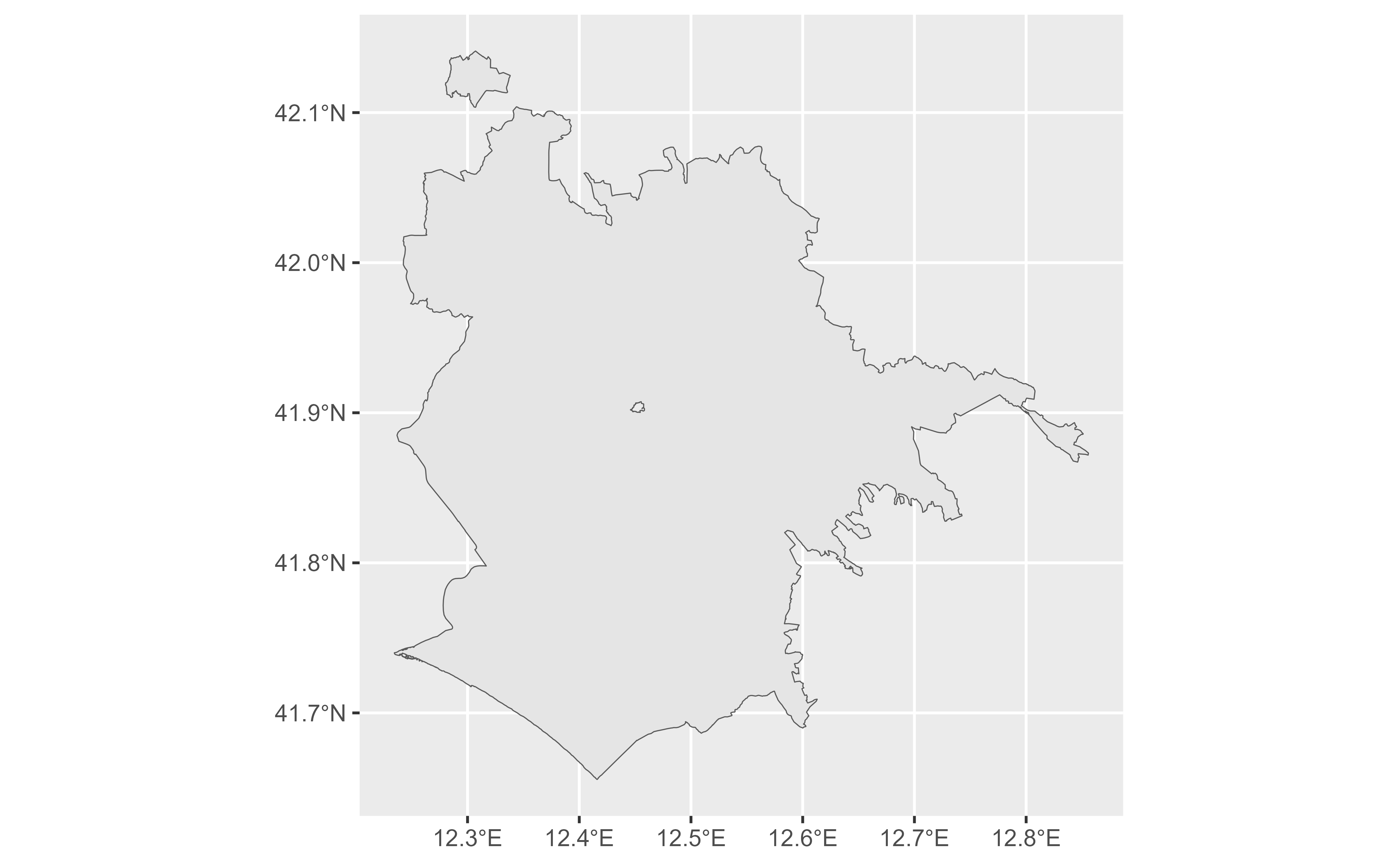Generates an address from a latitude and longitude. Latitudes must be
between \(\left[-90, 90 \right]\) and longitudes between
\(\left[-180, 180 \right]\). This function returns the spatial object
associated with the query using sf, see reverse_geo_lite() for
retrieving the data in tibble format.
Usage
reverse_geo_lite_sf(
lat,
long,
address = "address",
full_results = FALSE,
return_coords = TRUE,
verbose = FALSE,
nominatim_server = "https://nominatim.openstreetmap.org/",
progressbar = TRUE,
custom_query = list(),
points_only = TRUE
)Arguments
- lat
Latitude values in numeric format. Must be in the range \(\left[-90, 90 \right]\).
- long
Longitude values in numeric format. Must be in the range \(\left[-180, 180 \right]\).
- address
Address column name in the output data (default
"address").- full_results
Returns all available data from the API service. If
FALSE(default) only latitude, longitude and address columns are returned. See alsoreturn_addresses.- return_coords
Return input coordinates with results if
TRUE.- verbose
If
TRUEthen detailed logs are output to the console.- nominatim_server
The URL of the Nominatim server to use. Defaults to
"https://nominatim.openstreetmap.org/".- progressbar
Logical. If
TRUEdisplays a progress bar to indicate the progress of the function.- custom_query
API-specific parameters to be used, passed as a named list (ie.
list(zoom = 3)). See Details.- points_only
Logical
TRUE/FALSE. Whether to return only spatial points (TRUE, which is the default) or potentially other shapes as provided by the Nominatim API (FALSE). See About Geometry Types.
Value
A sf object with the results.
Details
See https://nominatim.org/release-docs/develop/api/Reverse/ for additional
parameters to be passed to custom_query.
About Zooming
Use the option custom_query = list(zoom = 3) to adjust the output. Some
equivalences on terms of zoom:
| zoom | address_detail |
3 | country |
5 | state |
8 | county |
10 | city |
14 | suburb |
16 | major streets |
17 | major and minor streets |
18 | building |
About Geometry Types
The parameter points_only specifies whether the function results will be
points (all Nominatim results are guaranteed to have at least point
geometry) or possibly other spatial objects.
Note that the type of geometry returned in case of points_only = FALSE
will depend on the object being geocoded:
Administrative areas, major buildings and the like will be returned as polygons.
Rivers, roads and their like as lines.
Amenities may be points even in case of a
points_only = FALSEcall.
The function is vectorized, allowing for multiple addresses to be geocoded;
in case of points_only = FALSE multiple geometry types may be returned.
See also
Reverse geocoding coordinates:
reverse_geo_lite()
Get sf objects:
bbox_to_poly(),
geo_address_lookup_sf(),
geo_amenity_sf(),
geo_lite_sf(),
geo_lite_struct_sf()
Examples
# \donttest{
library(ggplot2)
# Coliseum coords
col_lon <- 12.49309
col_lat <- 41.89026
# Coliseum as polygon
col_sf <- reverse_geo_lite_sf(
lat = col_lat,
lon = col_lon,
points_only = FALSE
)
dplyr::glimpse(col_sf)
#> Rows: 1
#> Columns: 4
#> $ address <chr> "Piazza del Colosseo, Celio, Municipio Roma I, Roma, Roma Cap…
#> $ lat <dbl> 41.89026
#> $ lon <dbl> 12.49309
#> $ geometry <POINT [°]> POINT (12.49333 41.89014)
if (any(!sf::st_is_empty(col_sf))) {
ggplot(col_sf) +
geom_sf()
}
 # City of Rome - same coords with zoom 10
rome_sf <- reverse_geo_lite_sf(
lat = col_lat,
lon = col_lon,
custom_query = list(zoom = 10),
points_only = FALSE
)
dplyr::glimpse(rome_sf)
#> Rows: 1
#> Columns: 4
#> $ address <chr> "Roma, Roma Capitale, Lazio, Italia"
#> $ lat <dbl> 41.89026
#> $ lon <dbl> 12.49309
#> $ geometry <MULTIPOLYGON [°]> MULTIPOLYGON (((12.23447 41...
if (any(!sf::st_is_empty(rome_sf))) {
ggplot(rome_sf) +
geom_sf()
}
# City of Rome - same coords with zoom 10
rome_sf <- reverse_geo_lite_sf(
lat = col_lat,
lon = col_lon,
custom_query = list(zoom = 10),
points_only = FALSE
)
dplyr::glimpse(rome_sf)
#> Rows: 1
#> Columns: 4
#> $ address <chr> "Roma, Roma Capitale, Lazio, Italia"
#> $ lat <dbl> 41.89026
#> $ lon <dbl> 12.49309
#> $ geometry <MULTIPOLYGON [°]> MULTIPOLYGON (((12.23447 41...
if (any(!sf::st_is_empty(rome_sf))) {
ggplot(rome_sf) +
geom_sf()
}
 # }
# }
